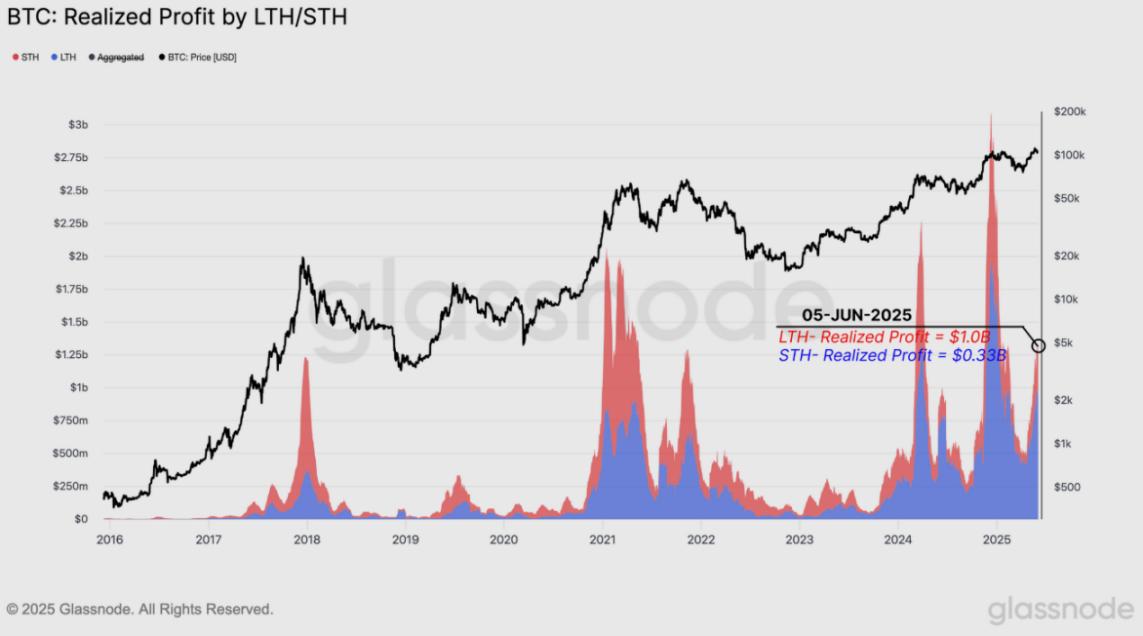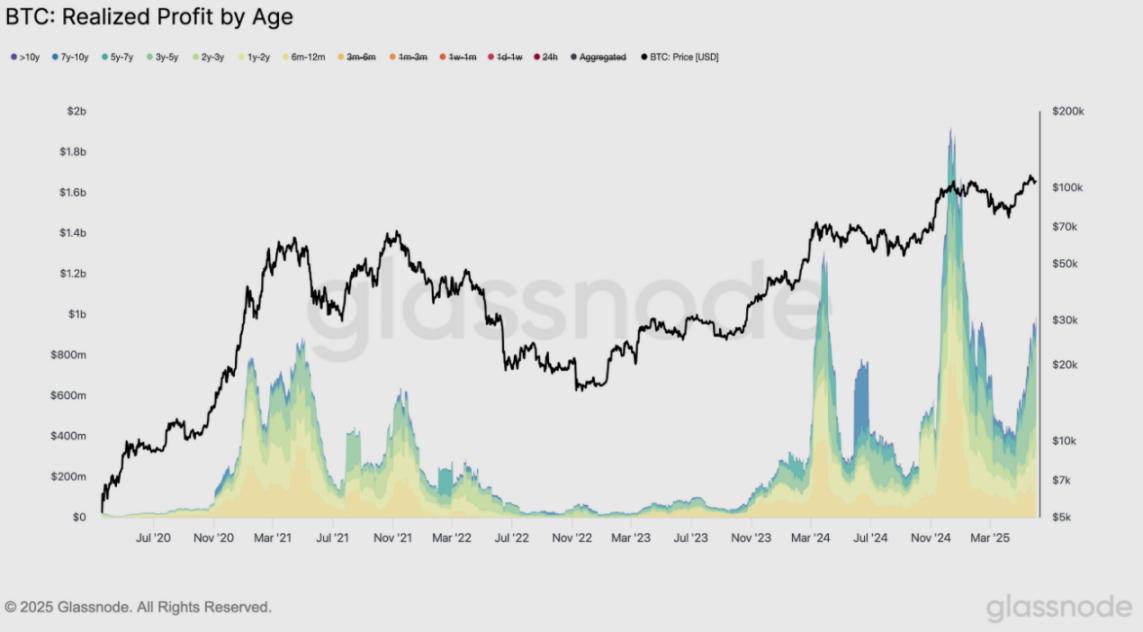Original Author:
Original Translation: Felix, PANews
As long-term holders begin to take profits, Bitcoin started to pull back after reaching a new high of $118,000. The key support levels are at $103,700 and $95,600, with signs indicating that long-term investors are selling, presenting a severe test for bulls.
Key Points:
Bitcoin reached a historical high of $118,000 but quickly fell back to $103,200. The initial rise seemed to be driven by the spot market, with the main accumulation zones of $81,000 to $85,000, $93,000 to $96,000, and $102,000 to $104,000 now potentially serving as support levels.
From a macro perspective, through the CBD heatmap, many historical accumulation zones have transformed into selling zones. Sellers from the ranges of $25,000 to $31,000, $38,000 to $44,000, and $60,000 to $73,000 are putting pressure on price movements.
The cost basis percentiles and short-term holder ranges indicate that recent support levels are around $103,700 and $95,600, with resistance at $114,800. These levels are important statistical indicators of broader market sentiment shifts.
Realized profits surged to $1.47 billion per day, marking the fifth massive profit-taking in this cycle. The selling is primarily led by long-term holders, not short-term traders.
The group holding for over a year dominates recent selling, reflecting mature capital rotation. This is consistent with previous CBD heatmap observations, confirming that experienced investors are shaping the current top formation phase.
Price Momentum Chart
... (rest of the text continues in the same manner)More importantly, this marks the fifth time in this cycle that daily realized profits have exceeded $1 billion. Such events often coincide with local market tops or slowdowns, especially when new demand cannot absorb such a scale of realized gains. This highlights the market's resilience when facing significant selling pressure.
Source: glassnode
Dynamic Transformation
To better understand the significance of the current wave of profit-taking, it is necessary to examine it from a cyclical perspective. Not all profit-taking events are the same, and the dynamic nature of these mechanisms can reveal how market maturity and volatility shape investor behavior over time.
One effective method is to examine the 90-day simple moving average (SMA) of realized net profit adjusted by market capitalization. This adjustment allows for comparison across different cycles. A clear trend is that the enthusiasm for profit-taking has weakened over time, reflecting the general degradation of cyclical upward performance and reduced volatility as the market matures.
From November 2015 to April 2018, the net profit-taking phase lasted about 25 months, with peaks exceeding 0.4% of market capitalization.
In the 2020 to 2022 cycle, this area lasted about 20 months, but peaks were only around 0.15%.
In the current cycle, starting from November 2023, the net profit-taking phase has lasted 18 months, forming two distinct peaks close to 0.1%.
This trend suggests that while profit-taking still exerts significant pressure, it has become more moderate, which may indicate a transition from the boom and bust frenzy to structural capital rotation in a more mature asset class.

Source: glassnode
Who is Profiting?
Another perspective for assessing the profit-taking cycle is to determine which investor groups are selling.
Since the 2015 to 2018 cycle, the share of profits realized by long-term holders (LTHs) has steadily increased at market euphoria peaks. This trend highlights the structural transformation of market maturity, with more experienced investors driving capital rotation rather than quick in-and-out speculators.
During the recent peak period, the 30-day moving average of realized profits for long-term holders (LTHs) surged to about $1 billion per day, while short-term holders (STHs) only realized $320 million daily, a gap of over 3 times, further confirming that this round of profit-taking is led by investors with longer holding times and stronger conviction.

Source: glassnode
At first glance, the current daily realized profits of about $1 billion for long-term holders (holding over 6 months) seem modest compared to the $1.8 billion peak in December 2024. However, a deeper analysis reveals a familiar pattern.
In previous bull markets, investors holding for 6 to 12 months typically contribute less to profit-taking as the cycle progresses. This dynamic is again evident in the current cycle. As the uptrend continues, more experienced long-term holders are becoming the primary sellers, seemingly shaping the top formation phase of this cycle.

Source: glassnode
Therefore, by excluding the 6 to 12 month holding group from the total realized profits of long-term holders, we can more accurately assess the true impact of experienced investors on current market dynamics. This adjustment eliminates the influence of Q1 2025 high-entry buyers with relatively limited unrealized gains and focuses on investors holding for over a year with higher profit margins.
When isolating the profits realized by investors holding for over a year, the significance of the current trend becomes more apparent. This group is typically associated with conviction investors, who are now realizing profits en masse, a behavior often indicating that the bull market trend is maturing or about to end.
This observation aligns with the earlier heatmap findings, which also suggest that recent selling pressure primarily comes from experienced investors, further confirming the increasing activity of long-term holders in this top formation phase.

Source: glassnode
Conclusion
Bitcoin recently climbed to a historic high of $118,000, but resistance is increasing, and market data shows early buyers are showing fatigue, with long-term holders taking profits. The heatmap indicates that previously strong accumulation zones have transformed into active selling zones, especially for investors who bought between $25,000 and $73,000.
On-chain pricing models, such as cost basis percentiles and short-term holder statistics, now define the market's immediate structure. If demand weakens, the key support levels at $103,700 and $95,600 will be crucial, while the upward resistance zone at $114,800 remains a test for market revival.
The profit realization mechanism is also becoming more intense, with daily profit peaks reaching $1.47 billion, primarily driven by long-term holders. This trend, coupled with the increased proportion of profit-taking by groups holding over a year, suggests we may be witnessing a distribution phase rather than a new breakthrough.
Overall, the market seems to be at a crossroads, influenced by increased selling pressure, diminishing bullish momentum, and the need for demand to prove its resilience. The next few weeks will be crucial in determining whether this is a medium-term consolidation or the beginning of a broader top formation.






